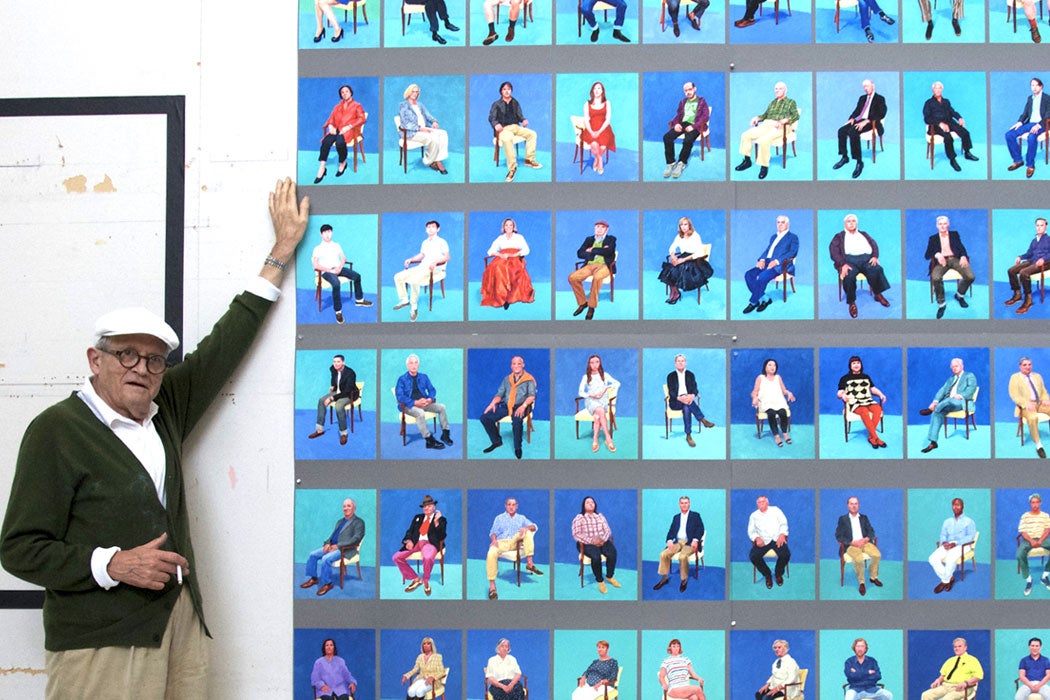The Los Angeles County Museum of Art is currently featuring a large retrospective of David Hockney’s painted portraits. Hockney is known for his paintings and photo collages that capture bright Southern California light as it bounces off turquoise pools and LA architecture. While photo collages and paintings are wildly different mediums, Hockney’s knowledge of both mediums has made all of his work richer.
In 1989, film critic Dave Thomson wrote, “Hockney paintings are flies on L.A.’s best walls.” In the 1972 painting, “Portrait of an Artist (pool with two figures),” for instance, Hockney depicts a pool with one figure swimming, fully submerged underwater. He swims toward a figure who stands clothed in khakis and a bright coral blazer, outside of the pool and looking downward to the swimmer.
Thomson describes this image, noting how Hockney’s photographic knowledge enhances the painting. “And this is a photographically influenced painting—not photo-realism, exactly, but photo-fantasy…And as soon as we relate it to photography, we recognize how seldom pictures provide such sun-soaked lucidity of color without glare or pain in the brightness.”
In an interview with singer Graham Nash, Hockney discusses his interest in these saturated and rich colors and how he foresaw the printing process as being integral to this digital age. When Nash notes that Hockney has been making portraits using a still video camera, Hockney responds that this process “did make me see how I might use color in a different way. It’s not coming out of the chemical process of film itself, but the mechanical and electronic process of the printing medium. Maybe this is the end of chemicals and water in photography.”
Want more stories like this one?
Nash’s interview focuses on Hockney’s photography, while also exploring where the artist blends and merges his two skills. After Nash asks Hockney whether he ever combines paintings, drawings, and photographs, Hockney replies that he hasn’t. But he goes on to describe how he has applied his drawing skills to photography via the computer. He explains that in watching the film Who Framed Roger Rabbit (“a great masterpiece”), Hockney saw how the animators used a computer device much like one he uses. “You can begin to see how drawing skills, used with the computer, can extend photography into different spheres. As a result, I think you can make different pictures.”
In blending these two skills, Hockney has in fact moved painting and photography into “different spheres”—whether in creating his vivid, hyper-saturated paintings of LA or in layering photos in ways that trick our eyes into seeing things we wouldn’t have seen in an ordinary photograph.







